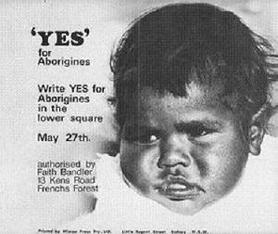Where the title Freedom Rides came from
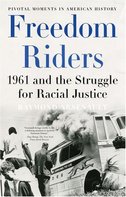
The title Freedom Rides came from (inspired by) the Freedom Riders of the American Civil Rights Movement who worked against racial discrimination e.g. transport segregation.
The purpose/aims of the Freedom Rides
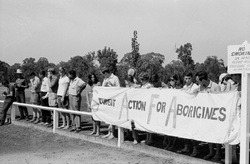
The Freedom Rides aimed to bring attention to (campaign) the poor state of Aboriginal health, education and housing, particularly in the country towns of New South Wales. They hoped to point out and help to lessen the socially discriminatory barriers which existed between Aboriginal and white residents. In addition to this they also wished to encourage and support Aboriginal people themselves to resist discrimination.
Role/importance of the media in the Freedom Rides
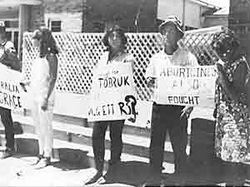
The media played an important role in the Freedom Rides as it was the only way to make the SAFA’s efforts known nationally and internationally. The student body had constant media coverage, which gained them publicity not only throughout Australia but internationally as well. This helped the SAFA is arousing awareness about the situation of the Indigenous Australians. They gained a good bit of publicity during their protest in Walgett, as a reporter from the Herald was also present there at the time and he was able to take some photos of them and their protest.
Places visited by the Freedom Rides
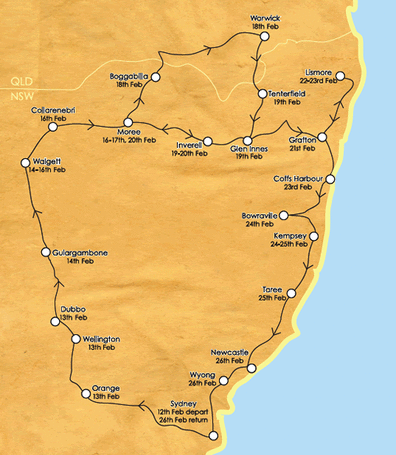
On the night of 12 February 1965 Charles Perkins and 29 other students from Sydney University set off in a hired bus to raise awareness about Aboriginal issues and rights. They departed from Sydney that night to reach Orange on the 13th. On the same day they also covered the towns Wellington, where they conducted surveys with Indigenous and Non-Indigenous people to find out about the living conditions and Dubbo. The next place they visited was Gulargambone – 14th, where they conducted similar surveys to those at Wellington. They then reached Walgett where they conducted a protest, and targeted racial discrimination by picketing the Walgett RSL. It was also they place where they gained some good media coverage. The next place they visited was Collarenebri on the 16th. After that they conducted protests at Moore for 2 days, and then travelled to Boggabilla and Warwick on the 18th. They next visited Tenterfield Glen Innes, Inverell and finished their loop back at Moore on the 20th. Grafton was their next stop on the 21st, and then Lismore where they protested for once again 2 days. After Coffs-Harbour and Bowraville they protested for 1 to 2 days at Kempsey. They then covered Taree, Newcastle, and Wyong before ending their trip of 3200 km at Sydney on the 26th. All the places where the group travelled to, they encountered racism, and tried their best to protest and remove segregation from public places such as pools. They faced many problems and some were even beaten up. The map on the right provides a clear picture of the route taken by the SAFA.
Racism uncovered by the Freedom Rides

A major accomplishment of the Freedom Rides was the removal of the ban in Moore, where Aboriginal people were not allowed into the pool. When they first tried to get in they were told, ‘Sorry, no darkies allowed’. So the Freedom Riders blocked the front entrance of the fool so that no one could enter. The white people chucked rotten eggs, tomatoes and bottle at them, but finally the Aboriginal people were allowed in, breaking the ban. Another example is that of the barricading of the Walgett RSL club. The club was the basis and symbol of the ANZAC legend, and personified mateship, courage, and nationhood. However this hospitality was not extended to Aboriginal service men who had served in World War l and ll. They were not allowed to use RSL facilities on ANZAC day or in worse cases not allowed in at all. With more protesting and media coverage the club was made to amend its law. The Freedom Riders were able to uncover more racism at more places they visited as a result of their protests and picketing.
Local reactions to the Freedom Rides
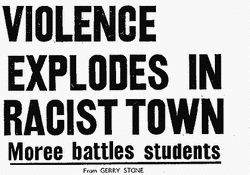
The white people were infuriated by the protests of the Freedom Riders. They hated their guts to stand up to them, and then picket. Typical reactions to the protests was the throwing of rotten eggs and tomatoes, and bottles at the Freedom Riders. the reaction was far stretched when a grazier's son rammed the Freedom Rides bus off the road when it was leaving Walgett in the middle of the night. Luckily no one was hurt, but this incident showed the reactions the Freedom Rides were receiving, and the incident was also make national as a reporter was on board at that time. The reactions from the Aboriginal people were different. When the Freedom Riders first began their protests, the Aboriginal members of the community were confused as to what their motives were, but after seeing their determination, they also extended a hand, and supported them in their protest.
What outcomes did the Freedom Riders achieve
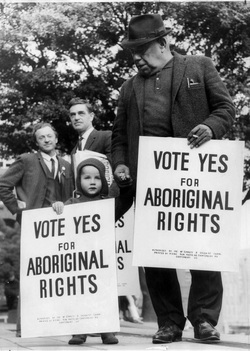
The Freedom Riders were able to achieve all of their outcomes. They were successful in bringing attention to the poor state of the Aboriginal people, mostly due to the media attention they gained. Two years after the media coverage they gained in Walgett, in the national referendum of 1967, the Australian people voted overwhelmingly in favour of removing individual state control over the way Indigenous people were governed and treated. There was a 90.77% yes vote for the Aborigines and this eventually led to many needed reforms at federal level. Another outcome they accomplished was decreasing the social gap and discriminatory barriers between Aborigines and white people. A great example of this outcome being accomplished is the removal of the swimming pool ban. This removal meant that the Aboriginal and white people would be sharing one public facility, which eventually lead to the decreasing of the social and discriminatory barriers. In addition to this, a major achievement of the Freedom Riders was that they were able to encourage many Aboriginal people to resist discrimination and fight for their rights. They were able to inspire many Aboriginal people to stand up and fight, particularly those that had accepted discrimination as an inevitable part of their lives. This is what enabled them to support the changes that were required and needed for them, and take an active part in resisting racism. A minor achievement accomplished as a result of this was the NSW Aborigines Welfare Board publicly announcing that it would spend sixty-five thousand pounds on housing in Moree. In the end of their ride, the Freedom Riders had successfully stirred up the debate on the state of the Aboriginal affairs round Australia. With this came pressure from outside and within Australia to reform, and this debate was maintained for the 1967 referendum mentioned above. The Freedom Rides have also been credited with helping end the ‘White Australia’ policy.
